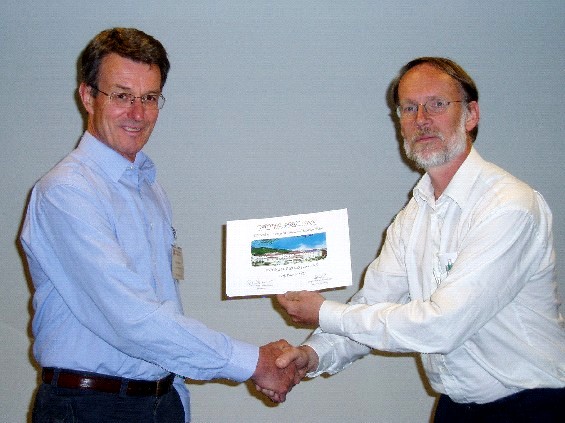
Peter Pusey graduated with a degree in Physics from Cambridge University in 1964.
During his Ph D work in Pittsburgh University he made some of the first photon correlation measurements. This was a technique that was to become the principal means to measure correlations in dynamical light scattering, and thereby determine the motion of particles in suspensions from which the light was scattered. It has become the standard method by which particles are characterized, and their motion studied, in both academia and industrial laboratories. He was awarded the degree in 1969.
From there he went to IBM laboratories in Yorktown Heights and during the years (1969-1972) began to pioneer the application of these light scattering techniques to virus particles (conveniently monodisperse biological systems), to understand Brownian motion of particles that interact with each other. Returning to the United Kingdom he began working in the Royal Signals and Radar Establishment in 1972, and during the next 19 years was one of several international scientific leaders that developed the techniques of, and particulate systems appropriate for study by dynamical light scattering. Thus,in 1974 Brian Vincent invited Peter Pusey to Bristol for a seminar, and there he met Ron Ottewill and discussed the synthesis of highly monodisperse model particle systems that could be studied by dynamic light scattering. Whilst these were charged, and therefore quite dilute, they were sufficiently simple systems that they assisted in the development in the technique of dynamic light scattering, and the underlying conceptual and quantitative treatment of Brownian motion of interacting particles.
Shortly after, Peter Pusey realised that the hard sphere dense colloidal suspensions were a much richer system to study. By 1986 he had (in collaboration with Bill van Megen) developed and published a rather complete phase diagram of that system, including the first experimental observation of an apparent dynamical arrest (so-called “glass”) transition at particle densities of 0.58. This paper, published in Nature in 1986 now has 500 citations, and was seminal in framing the concept of a colloidal glass. That work was carried on by Bill van Megan and is now a classical reference system in physical science of particulate systems.
During this period Peter Pusey pioneered the underlying concepts to study non-ergodic systems (here, time and ensemble averages are not equivalent). In so doing he developed methods for averaging the results in dynamical light scattering.
In 1991 Peter Pusey was appointed to the Chair of Physics in Edinburgh University where he remains until now.
Starting from earlier work of Brain Vincent, Bill Russell on hard sphere fluids with added polymer, Peter Pusey (in collaboration with Henck Lekkerkerker and his colleagues in Edinburgh) started to explore in a detailed quantitative manner, the phase- structure and dynamics of this model system. This was to become the canonical model of systems with hard core potential and short-ranged attractions.
The nature of the phase-diagram, its dependence with range of potential, and its “arrested” or glassy states were clarified in this work. In foundation work published in Science in 2002 (for which the Rhodia prize is now awarded) he clearly identified for the first time the presence of re-entrance in the fluid-glass transition curve at high volume fractions, and in this and subsequent work established the existence of an attractive and repulsive glass.
This has had a number of profound impacts.
Firstly, it helped develop the whole concept of dynamically slowed, and dynamically arrested particulate systems into a field of study, rather than an isolated example.
By its close comparison with theoretical research it stimulated again a re-examination of the whole theoretical framework of the glass transition, a process that has continued and enlarged over the last few years.
It helped stimulate thinking on new concepts of engineered materials, created by dynamical arrest (glass-like) transitions of colloidal and nano-particules.
The European Colloids and Interface Society has great pleasure in awarding the Rhodia Prize to Peter Pusey for outstanding contributions in the experimental study of dynamically arrested (glassy) particulate matter, especially in relation to hard sphere fluids with added polymer.
